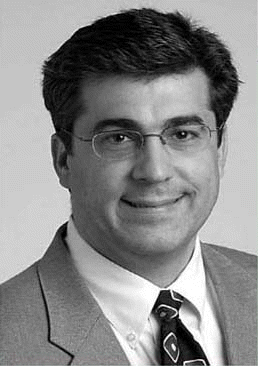Additionally, only otolaryngologists who have been trained by manufacturer can use the device. Any ENT can go through the training, Dr. Bolger said. But you have to go through the one-day training program in order to buy it.
Explore This Issue
May 2006The reason for this cautious approach: lack of long-term data when the device was approved in May 2005, Dr. Bolger said. The company wanted to take five or six months to identify and train eight to nine good surgeons in its use. As part of an ongoing clinical trial designed to obtain more safety and feasibility data and get more insight into outcomes, these surgeons have used the device to dilate over 300 obstructed sinus ostia in over 100 patients to date.
While six-month results of the trial will not be reported until this fall, early results suggest that outcomes hold up over time, said Dr. Goldberg, who was one of the first surgeons to be trained in the device’s use after FDA approval.
We are seeing patency in the vast majority of evaluated patients at two to three months, he told ENToday. This bodes well for the technology as you would typically expect closure of the ostium, if you were going to see it, at two to three months.
Dr. Bolger agreed. In general, when dilating ostia, you can usually tell in 6 to 12 weeks if it will work. Six months just gives it more acceptability.
Possible Drawbacks
There are some drawbacks. Dr. Goldberg said that one disadvantage of the technology is the need at this point to use fluoroscopy (for confirmation of guidewire and balloon placement) and its attendant equipment and radiation issues. However, the radiation exposure is quite brief and lessens with experience.
Donald Lanza, MD, Director of the Sinus & Nasal Institute of Florida in St. Petersburg, said that an even bigger drawback is that the new technology doesn’t target the underlying pathology. Dr. Lanza is not involved in the clinical trials of the balloon sinuplasty system.
Experimental studies show that in some patients with chronic sinusitis, the bone is chronically inflamed-even more so than in osteomyelitis, he said. This inflammation is thought to be caused by one of three insults: bacteria, fungus, or other microbes; enterotoxins (or superantigens) of bacteria such as Staphylococcus aureus; or biofilm, similar to the quiescent bacteria embedded in a polysaccharide matrix, which accumulates on one’s teeth overnight.
Some patients with chronic sinusitis have chronically inflamed bone, so that squashing the bone and stretching the tissue still leaves behind the underlying insult. You improve the plumbing temporarily but don’t necessarily remove pathology in surrounding tissue. – -Donald Lanza, MD

Leave a Reply